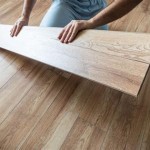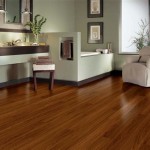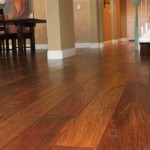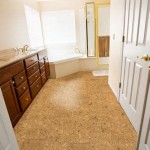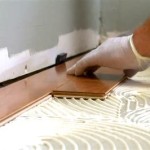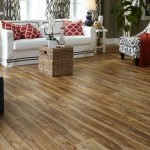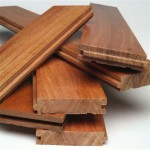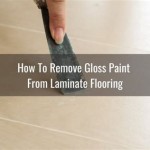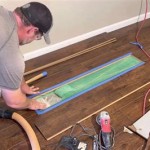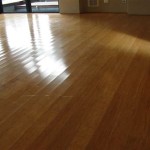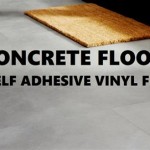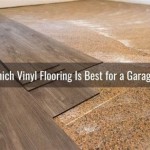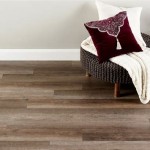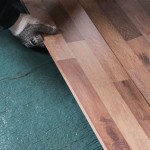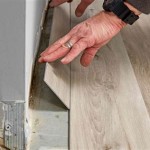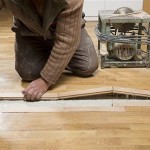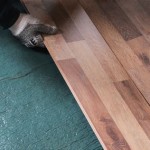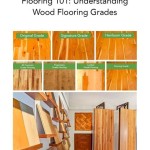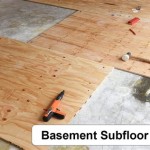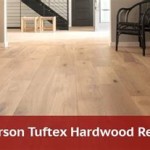Is Luxury Vinyl Plank Flooring Toxic to Dogs and Cats?
Luxury Vinyl Plank (LVP) flooring has surged in popularity due to its durability, affordability, and aesthetic appeal. As a pet owner, however, the potential health risks associated with any household material are a primary concern. This article examines the composition of LVP flooring and evaluates the potential toxicity it may pose to dogs and cats.
LVP flooring is a synthetic flooring product generally composed of several layers. At its core is often a PVC (polyvinyl chloride) layer, which provides the flooring with its structure and water resistance. Above this is a printed layer that mimics the appearance of wood, stone, or other materials. A wear layer, typically made of polyurethane, protects the printed layer from scratches and wear. Finally, some LVP floors include an attached underlayment for added comfort and sound insulation. Each of these layers can potentially contribute to both volatile organic compound (VOC) emissions and the presence of other substances that could be harmful to pets.
The primary concern regarding the toxicity of LVP flooring lies in its composition and the potential for the release of VOCs. Understanding the inherent risks associated with the materials used in its manufacture is crucial in assessing its safety for pets.
Understanding the Components of LVP Flooring and Potential Risks
The composition of LVP flooring varies between manufacturers and product lines, but generally includes PVC, plasticizers, stabilizers, and pigments. Each of these components presents a different set of potential health risks.
PVC, a synthetic plastic polymer, is a common component in many LVP products. While PVC itself is relatively inert in its solid form, the manufacturing process and the presence of additives can introduce potential hazards. The primary concern related to PVC is the potential release of VOCs, especially during the initial installation phase. Furthermore, the manufacturing process of PVC can involve certain chemicals that are environmentally problematic, though these are typically contained within the manufacturing facility and not directly related to the finished product's toxicity.
Plasticizers are added to PVC to make it more flexible and less brittle. Phthalates were once commonly used as plasticizers, but due to health concerns, many manufacturers have transitioned to alternative plasticizers. Phthalates have been linked to endocrine disruption and other adverse health effects in animals and humans. While regulations have restricted the use of certain phthalates in children's products, their presence in older LVP flooring remains a concern. Newer LVP products typically use phthalate-free plasticizers, but it is still important to verify the specific plasticizers used in the flooring you are considering.
Stabilizers are used to prevent the PVC from degrading over time due to exposure to heat and UV light. Heavy metals, such as lead and cadmium, were previously used as stabilizers, but their use has been significantly reduced or eliminated due to health and environmental concerns. However, some older or less expensive LVP flooring might still contain trace amounts of these heavy metals. It is essential to choose LVP flooring that is certified to be lead-free and cadmium-free.
Pigments are used to give the LVP flooring its color and pattern. Some pigments may contain heavy metals or other potentially toxic substances. Again, it is crucial to select LVP flooring from reputable manufacturers who adhere to strict quality control standards and use safe pigments.
Adhesives are used during installation to secure the LVP planks to the subfloor, and they are a significant source of VOC emissions. The type of adhesive used can significantly impact the indoor air quality. It is highly recommended to use low-VOC or zero-VOC adhesives to minimize the potential health risks.
VOC Emissions and Their Potential Impact on Pets
VOCs are organic chemicals that evaporate at room temperature. LVP flooring can emit VOCs, especially during the initial weeks or months after installation. The types and concentrations of VOCs emitted vary depending on the flooring’s composition, manufacturing process, and the adhesive used. Common VOCs emitted from LVP flooring include formaldehyde, benzene, toluene, ethylbenzene, and xylene. These chemicals can cause a range of health problems in both humans and pets.
Dogs and cats are generally more susceptible to the effects of VOCs than humans due to their smaller size and their tendency to spend more time close to the floor, where VOCs tend to concentrate. Symptoms of VOC exposure in pets can include respiratory irritation (coughing, sneezing, difficulty breathing), skin irritation (itching, redness), eye irritation (watering, squinting), neurological symptoms (lethargy, incoordination, seizures), and gastrointestinal issues (vomiting, diarrhea). Long-term exposure to VOCs can potentially lead to more serious health problems, such as cancer and organ damage.
The level of VOC emissions from LVP flooring can be influenced by several factors, including temperature, humidity, and ventilation. Higher temperatures and humidity levels can increase the rate of VOC emissions. Adequate ventilation helps to dilute and remove VOCs from the indoor air.
To minimize VOC exposure, it is essential to choose LVP flooring that is certified by independent organizations such as FloorScore or GreenGuard. These certifications indicate that the flooring has been tested and meets strict VOC emission limits. Selecting low-VOC adhesives and ensuring proper ventilation during and after installation are also crucial steps in reducing VOC exposure.
Pet owners should be especially vigilant during the initial weeks after LVP flooring installation, as VOC emissions are typically highest during this period. Increased ventilation, air purifiers with activated carbon filters, and monitoring pets for any signs of adverse health effects are recommended during this time.
Mitigating Risks and Choosing Safer LVP Options
While the potential for toxicity exists, steps can be taken to minimize the risks associated with LVP flooring. Careful selection of products and proper installation practices can significantly reduce the exposure to potentially harmful substances.
Prioritizing certified low-VOC LVP options is paramount. Look for certifications such as FloorScore, GreenGuard, or similar independent verification that the product has undergone rigorous testing for VOC emissions and meets stringent standards. These certifications provide assurance that the flooring is less likely to contribute to indoor air pollution.
Choosing phthalate-free and heavy metal-free LVP flooring is also essential. Check the product specifications and safety data sheets (SDS) to verify that the flooring does not contain phthalates or heavy metals such as lead and cadmium. This information should be readily available from the manufacturer or retailer.
The type of adhesive used during installation can significantly impact VOC emissions. Opt for low-VOC or zero-VOC adhesives to minimize the release of harmful chemicals into the air. Water-based adhesives are generally a safer option than solvent-based adhesives.
Proper ventilation is crucial during and after LVP flooring installation. Open windows and use fans to circulate air and remove VOCs from the indoor environment. Continue to ventilate the area for several days or weeks after installation to allow the VOCs to dissipate. Consider using an air purifier with an activated carbon filter to remove VOCs from the air.
Regular cleaning of LVP flooring can help to remove dust, dirt, and other contaminants that may accumulate on the surface. Use a mild, non-toxic cleaner specifically designed for LVP flooring. Avoid using harsh chemicals or abrasive cleaners that can damage the flooring or release harmful fumes. Follow the manufacturer's instructions for cleaning and maintenance.
Consider using area rugs or runners in areas where pets spend a lot of time. This can provide a barrier between the pets and the LVP flooring, reducing their exposure to VOCs and other potential irritants. Choose rugs made from natural fibers, such as cotton or wool, and avoid rugs with synthetic backing.
If pets exhibit any signs of adverse health effects after LVP flooring installation, consult a veterinarian immediately. Early detection and treatment can prevent more serious health problems. Provide the veterinarian with information about the type of LVP flooring installed, the adhesive used, and any other relevant details.
By exercising caution and selecting safer LVP options, pet owners can minimize the risks associated with this popular flooring choice and create a healthier living environment for their furry companions.

Pet Proof Flooring Guide Metro Contractors

Ultimate Guide To Pet Friendly Floor Options Klc Floors More
Pet Friendly Spaces The Best Flooring For Pets Coretec

Pet Friendly Spaces The Best Flooring For Pets Coretec

Pet Proof Flooring Guide Metro Contractors

Best Flooring For Kids And Pets 50floor

Pet Friendly Flooring Guide The Best Floors For Paws Claws And Hooves
Vinyl Flooring For Dogs Pets Pet Proof Plank Tile

Best Types Of Flooring For Cats Singapore

Is Textured Laminate Good For Pets 50floor
See Also
